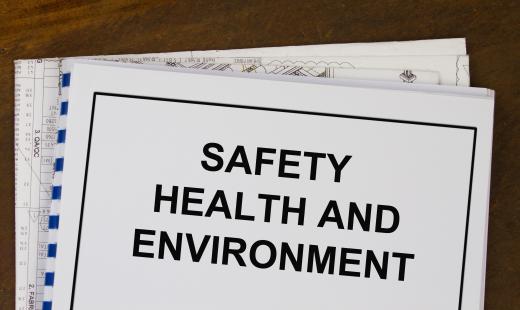There are two keys to trench safety: appropriate building techniques and continuous monitoring of soil conditions. A trench is an opening in the ground that is deeper than it is wide. Trenches are used for many reasons, ranging from the installation of underground pipes to environmental studies.
Soil mechanics and the laws of physics state that all trenches will eventually cave in. It is simply a question of when and if there are any people at risk. Trench safety lies in the careful preparation of the work site and soil condition results. Planning ahead and using modern technology increases trench safety.

There are two approved methods of building trenches: shoring and sloping. Shoring is the process of installing wood or metal panels against the soil walls inside the trench and securing them in place with bars and vises. The installation of the shoring panels must be done correctly, as they need to maintain sufficient resistance to hold the soil back while work is occurring. Proper shoring prevents the soil from falling into the trench.
A sloped trench has a wider angle at the top of the trench than at the bottom of the trench. This method is used to reduce the risk of a trench cave-in by removing excess material from the mouth of the trench. The shape of the sloped trench is an inverted triangle, with a wider opening at the top of the trench than at the base.
Soil conditions are rated using standard criteria and are given one of four possible ranking levels. Soil types vary from very poor to fairly good. Determining the type of soil and planning the trench building operation is the responsibility of the site engineer. Workplace health and safety rules state that it is the responsibility of a professional engineer to ensure that the trench is properly designed and a safety mechanism is in place to protect workers in the event of a cave it. Workers can take steps to educate themselves about trench safety and refuse unsafe work.
The soil type determines the degree of slope required. In very poor soil conditions, the trench must be shored to ensure trench safety. In poor soil conditions, the walls should be sloped at a ratio of three feet (0.9 meters) back from the sides for every foot (0.3 meters) of distance to the trench bottom. In both good and fairly good soil conditions, the required slope angle is 45 degrees. This translates into a wall sloped at a ratio of one foot (0.3 meter) back from the sides for every foot (0.3 meter) down to the bottom of the trench.
